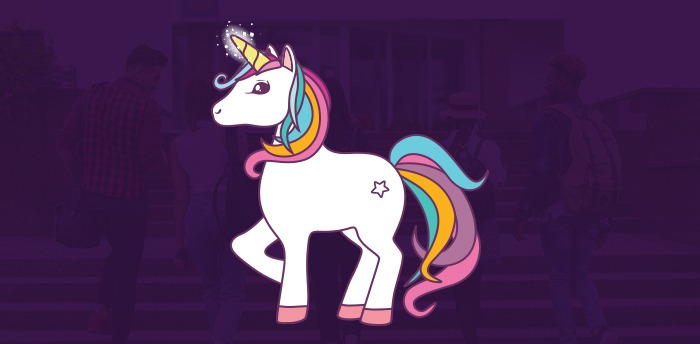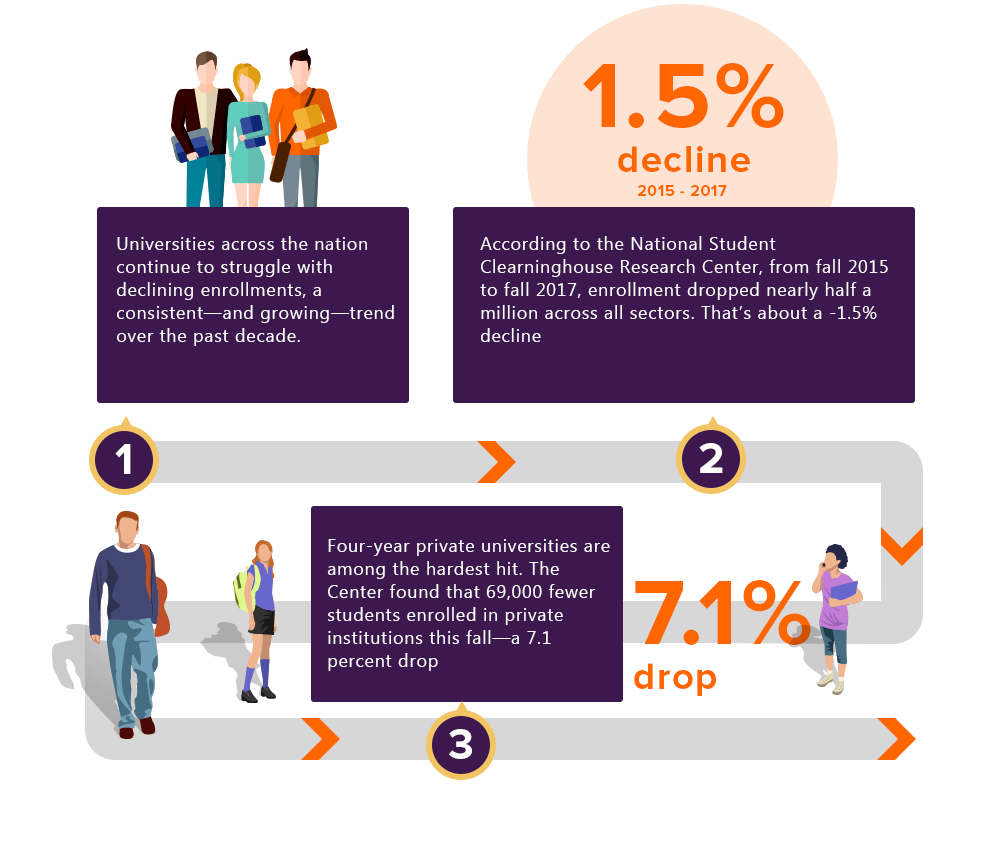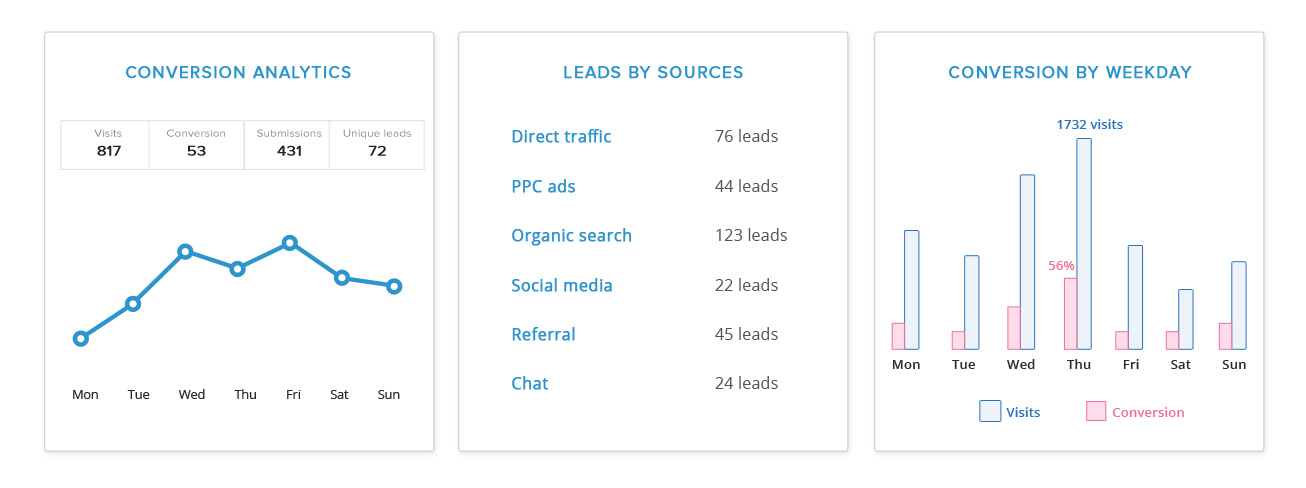
Universities across the nation continue to struggle with declining enrollments, a consistent—and growing—trend over the past decade. According to the National Student Clearninghouse Research Center, from fall 2015 to fall 2017, enrollment dropped nearly half a million across all sectors. That’s about a -1.5% decline—a number that, though seemingly small, is relatively significant given the US’s large college student population.
Four-year private universities are among the hardest hit. The Center found that 69,000 fewer students enrolled in private institutions this fall—a 7.1 percent drop that builds on years of even larger declines.
So, what can universities—especially private ones—do to proactively address this issue? And how can they not only ensure steady enrollment, but enrollment growth?
 According to Katya Popova, Director of Strategic Communications at American University’s Kogod School of Business, it’s all about how an institution interacts with applicants. “Each audience needs a different mode of communication, and a different message,” she says.
According to Katya Popova, Director of Strategic Communications at American University’s Kogod School of Business, it’s all about how an institution interacts with applicants. “Each audience needs a different mode of communication, and a different message,” she says.
And needs to be thoroughly researched. In an age where, by some estimates, the average adult consumer is exposed to around 4,000 advertisements daily, tailored messaging is key. “Understanding your audience is essential—you have to get your students’ motivations,” Popova says. “It’s more important now than ever.”

For Popova, marketing automation software offers an all-encompassing solution. The technology allows her to track each move a lead makes—like how long they’re spending on a program’s landing page. She can then gauge their level and area of interest, ensuring that, when she contacts them, the right lead gets the right attention.
She can also hone her messaging through smart list segmentation. The software allows her to strategically customize her e-mail lists based on criteria like age, gender, interests and behavior. “This allows us to be clever about how we’re generating demand for our programs,” Popova says.
What marketing automation is most effective in addressing, however, is what Popova calls “the unicorn of every marketing professional:” attribution.

Attribution, as defined by NG Data, is the science of determining what media or marketing drives revenue. It’s the bridge between marketing data and sales data—the analysis that tells you if what you’re doing is working.
“Until you’re able to meaningfully attribute your user experience success to a particular effort, you’ll never be able to target the proper audience at the proper time,” Popova says.
With marketing automation software, she receives real-time landing page reports so she can see which source is generating the best conversions. Reports are stored within the automation software, offering an organized and efficient analysis platform.
Popova is also able to analyze and improve her drip marketing campaigns by using advanced e-mail analytics. She can then personalize campaigns based on the data, and deliver them at the time of her choosing.
“Marketing automation allows you to speak to possible constituents in a way that resonates with them. It’s about getting to know people on a larger scale so you can have a meaningful conversation,” Popova says.
And, with the right message at the right time, battle the continued decline in student enrollment. Strategic communication means smarter recruiting—a connection that also means more deposits.
As Popova puts it, “it’s a matter of investment in technology.”








